100th Anniversary Great Nave Tour at the Cathedral of St. John the Divine
Celebrate the 1925 construction of the stunning nave inside the world's largest Gothic cathedral!


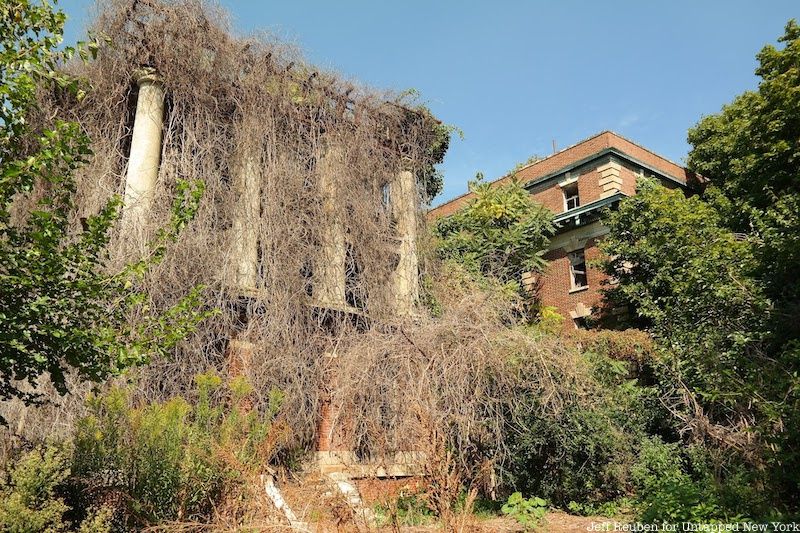
The Bronx is rich with hallowed arts, sports, and wildlife institutions contributing to the borough’s intriguing history and culture. Many buildings and structures throughout The Bronx have fallen into disrepair and now lay abandoned in various stages of decay. These buildings, once bustling transportation hubs, government institutions, and military armories have since become shells of what they once were. While many of these spots seem destined to remain in the shadow of their former glory, others have received a chance at new life from projects to restore, revitalize, and largely re-imagine the areas they occupy. Here are 10 abandoned places to discover throughout The Bronx.
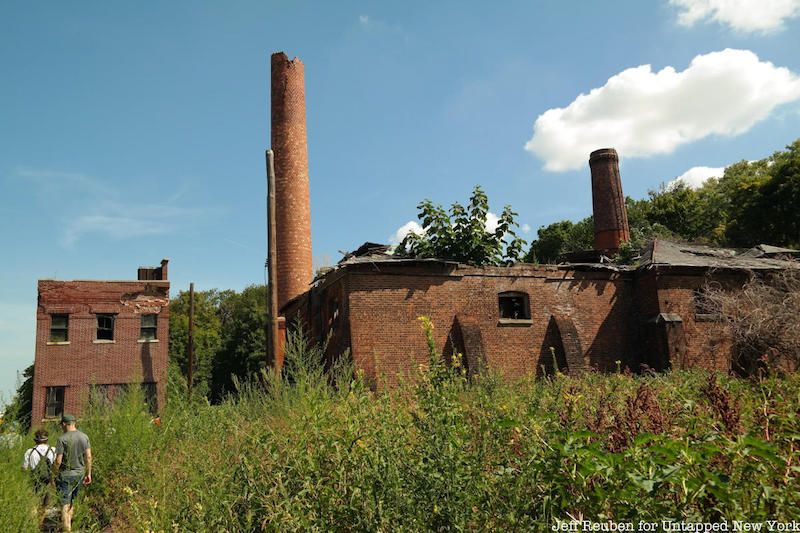
North Brother Island, located 22 acres off the coast of the South Bronx, has been abandoned for more than 50 years. Once World War II veteran housing, a youth drug rehabilitation center, and a former quarantine facility that housed infected patients — including Typhoid Mary — North Brother Island is now in a state of decay and overcome by rampant vegetation. The island’s 25 buildings “pose a considerable threat to the island’s visitors,” according to NYC Parks.
Though the island was shut down in 1964, residents of The Bronx often travel to this area to party. The New York Police Department has cracked down on this practice as a result of an array of hazardous incidents. Though humans no longer occupy the island, it is home to many bird populations, such as gulls, herons, cormorants, and egrets. On North Brother Island, the birds can safely rear their young.
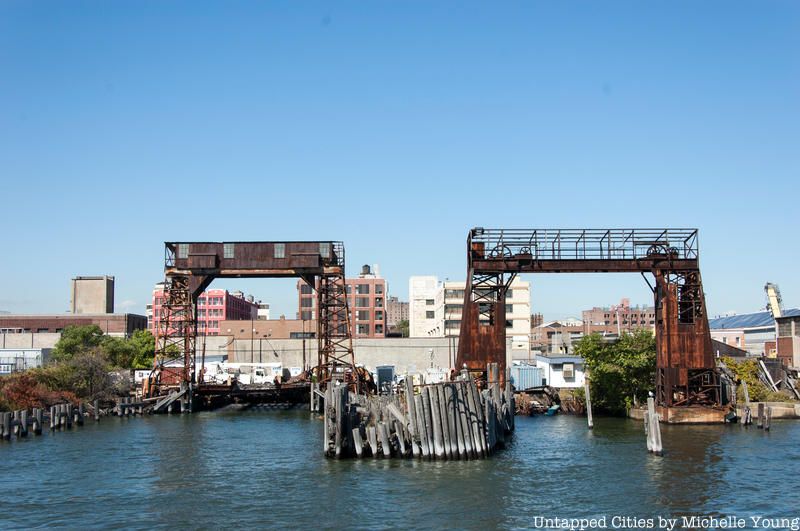
The Port Morris area of the Bronx, an industrial section of the borough located near New York City’s railroad yards, is home to several gantry cranes which were used for loading and unloading ferries. These gantries, though widely used during their time, fell out of use in the 1960s and have been abandoned ever since.
Since 2014, however, efforts have been made to revitalize the Port Morris gantries. This initiative, led by the South Bronx-based organization Friends of Brook Park, would place the gantries in the center of a newly-constructed park. However, little progress has been made on the project, leaving the gantries vulnerable to vandalism and decay. The Friends of Brook Park project is one of many efforts for New York City’s gantries to be revitalized as anchors for parks. In addition to the Port Morris gantries, the 69th Street Transfer Bridge and Long Island City Gantries have earned the attention of developers.
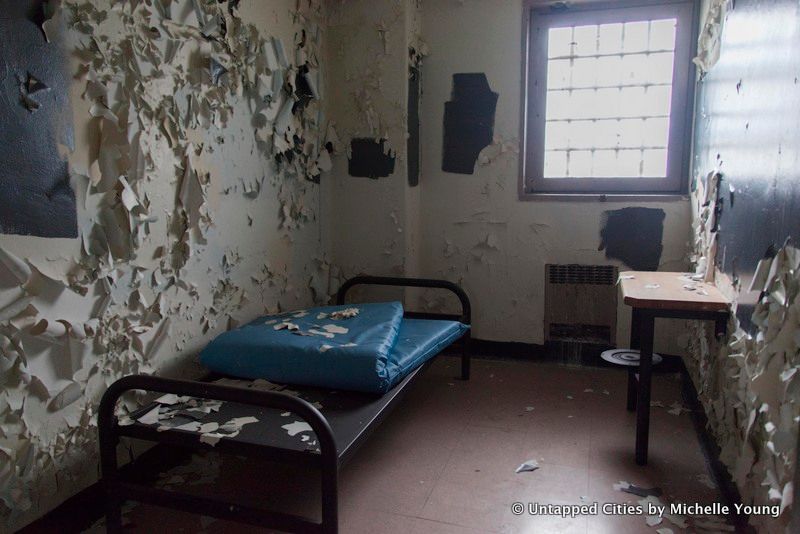
The Spofford Juvenile Detention Center in Hunts Point, The Bronx closed in 2011 after community activists and criminal justice advocates cited its poor living conditions and treatment. Renamed the Bridges Juvenile Detention Center in 1999, the multi-wing complex once held as many as 289 juvenile detainees. The detention center featured several recreational facilities such as basketball and tennis courts and a pool. It also held a state-approved school named the Carter G. Woodson Academy.
When Spofford closed in 2011, the center left everything behind, giving the building the appearance a frozen-in-time appearance. Mattresses, files, deflated basketballs, and a single black sneaker are among the pieces remaining in the abandoned detention center. The building will not stay like this for long, however, as the New York City Economic Development Corporation has plans to turn the formal detention center into a five-acre affordable housing development called “The Peninsula.” In June 2022, Mayor Eric Adams, a former detainee of the center, co-launched the official transformation of the site.
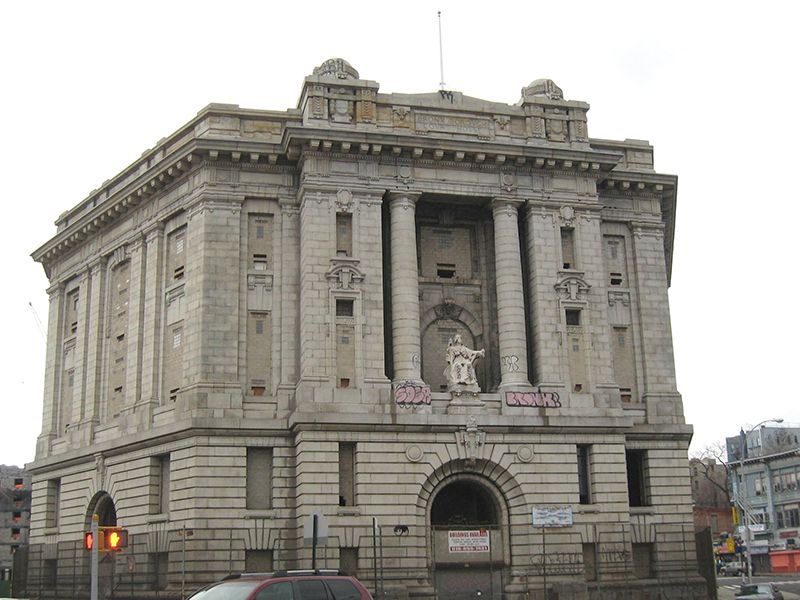
The Old Bronx Borough Courthouse, an official New York City landmark at 878 Brook Street in the South Bronx, was built between 1905 and 1914. The edifice functioned as a home to Supreme, Surrogate’s, and County Courts until the opening of the Bronx County Courthouse in 1934. The Beaux-Arts structure has a grand interior with marble and iron detailing.
The four-story building was shuttered for 37 years before reopening its doors in 2015 for a series of public art programs entitled When You Cut Into the Present the Future Leaks Out put on by artist and activist group No Longer Empty. Three floors of the Old Bronx Borough Courthouse were filled with contemporary art. Twenty-six local artists came together to create works that drew from the history and structure of the borough.
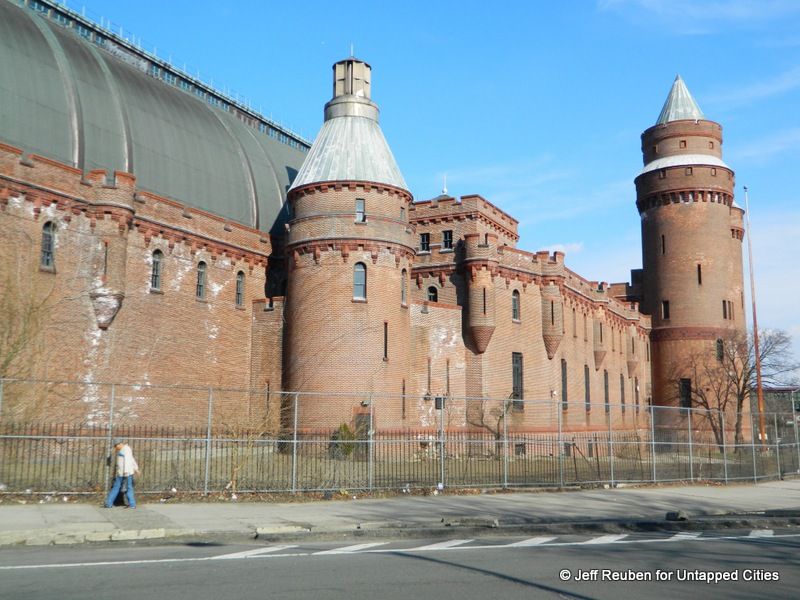
The Kingsbridge Armory on Kingsbridge Road in The Bronx has been vacant since 1995. The 575,000 square foot building, once used to house the National Guard’s Eighth Coastal Artillery Regiment, has not been used for military purposes in more than 20 years. It has, however, been used for several other purposes, including the filming of the 2006 Will Smith film, I Am Legend.
In 2013, Mayor Michael Bloomberg and the New York City Economic Development Corp. unveiled an initiative to transform the Kingsbridge Armory in the Bronx into the world’s largest indoor ice facility. The new building, to be called the Kingsbridge National Ice Center (KNIC), will include 9 regulation ice rinks spread across multiple floors of the building. In recent years, the $275 million project has faced difficulty getting financed. However, two abbexed buildings on the property have received funding from New York State to undergo upgrades, becoming functional armories.
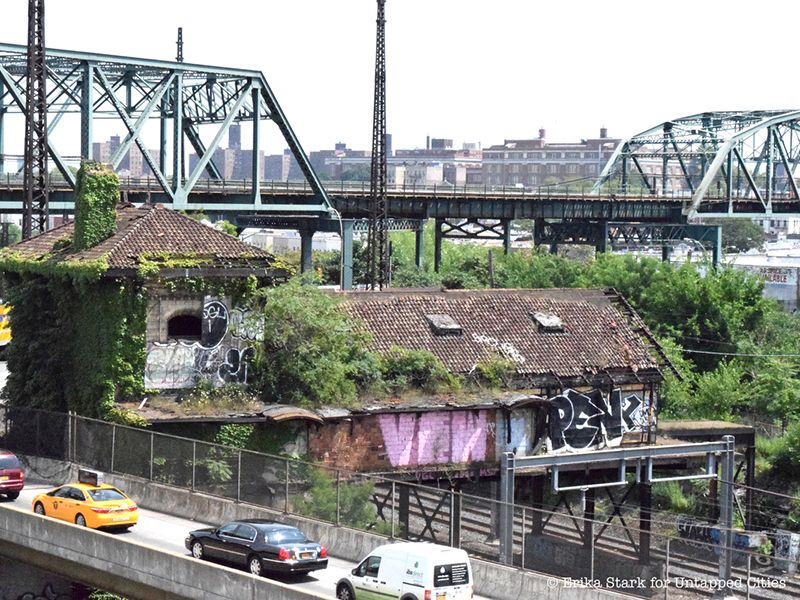
Plants and vines have overcome the Westchester Avenue Station along Concrete Plant Park in The Bronx. The station, which was completed between 1908 and 1916, is one of thirteen stations that Gilbert designed for the New York, New Haven & Hartford Railroad Company. It is now one of only four that remain — the other three of which are Hunts Point Avenue, City Island, and Morris Park. The Westchester Avenue Station features architectural elements that can be found in Gilbert’s other famous works including the Woolworth Building and the Alexander Hamilton Custom House. The facade features richly glazed terra cotta tiles and ornately carved panels and cut-outs in geometric and floral patterns.
In 2012, SLO Architecture created an innovative innovation project that aimed to bring new life to the station. Plans for the project showed that the building would be relocated to a spot over the Bronx River, adjacent to Concrete Plant Park. This relocation would link the structure to the waterways and waterfronts of Greater New York. The pandemic, however, slowed the project’s progress. As of 2022, the abandoned station is still in disrepair.
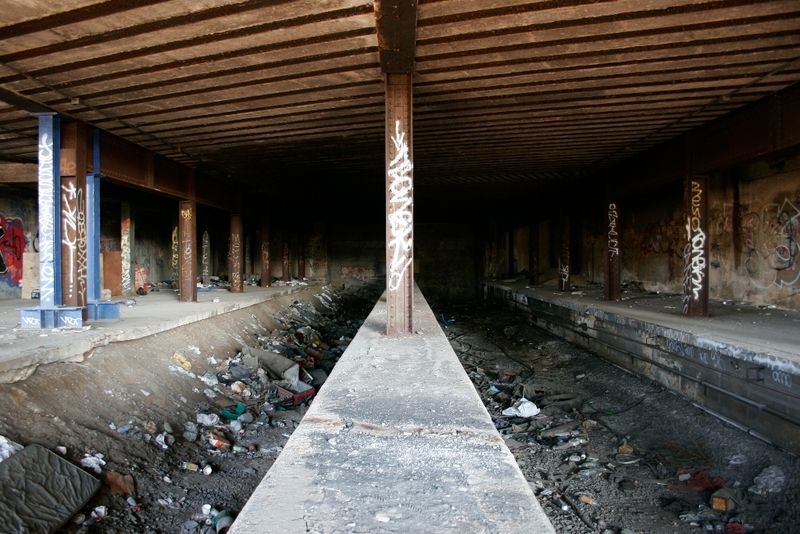
The abandoned Sedgwick and Jerome-Anderson station in The Bronx is one of many abandoned subway stations, levels, and platforms throughout the city. First opened in 1918, the station was once a part of the Ninth Avenue El, which was the first elevated railway in New York City history. The station closed in 1958 after serving as a Polo Grounds Shuttle for 18 years.
While most of the stops on the line have since been demolished, pieces of the tracks at the Sedgwick and Jerome-Anderson station still remain as remnants to a past era. Access to the Jerome-Anderson side of the station is extremely limited today as the elevated platforms are gone, so a bit of climbing is required to see some of the most intriguing portions of the abandoned tracks. However, the Sedgwick side of the platform is more visitor-friendly as it is accessible via a footbridge.
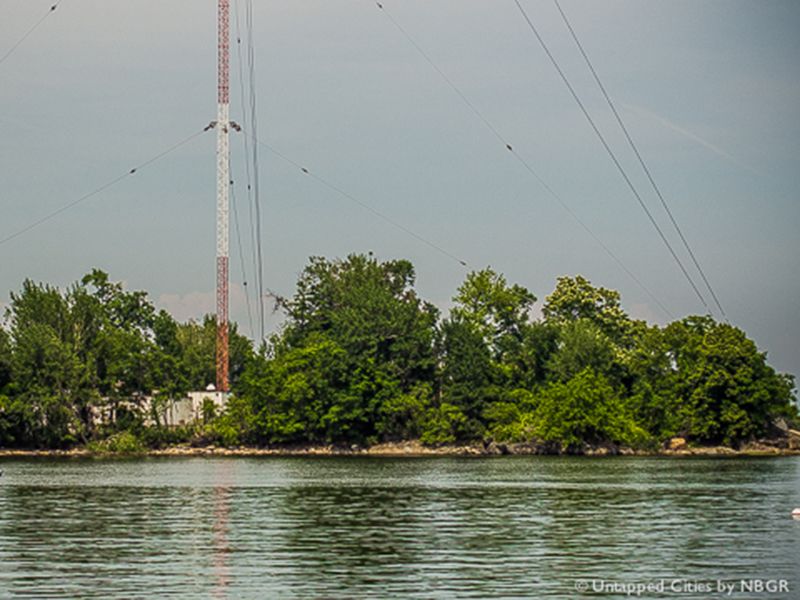
Chimney Sweeps Islands and High Island are part of a collection of 20 islands on the border of Bronx County known as the “Devil’s Stepping Stones.” This name finds its origin in Native American folklore, which stated that a land mass formed whenever the Devil set his foot on the water. The name of these islands also references their barren land, composed of a significant amount of bedrock and little vegetation.
The Chimney Sweep islands have never actually been inhabited by people, but rather bird populations such as seagulls and blue herons have overtaken the barren land. High Island once hosted a short-lived human dwelling, before they were displaced for the construction of a radio transmission tower in 1962. The tower had to be reconstructed a few years later after a small plane crashed into it in 1967.
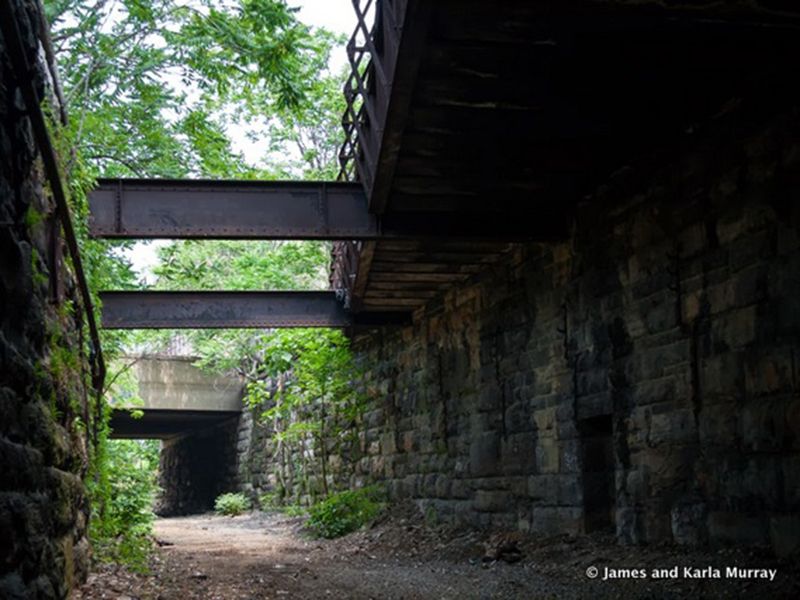
The Port Morris Line train tracks in the Bronx were built in 1842. They were once nicknamed the “Mott Haven Swamp” for the water accumulated in the rail corridor; most notably, the Department of Environment Protection removed 625,000 gallons of water from a one-mile section of the corridor in December 2009. In recent years, the city has renovated the area allowing pedestrians to walk through the tracks. Consequently, the track beds have continued to host homeless encampments and be filled with graffiti.
Though the Department of Environment Protection’s efforts made the Port Morris Line train trakcs more accessible, the area is still largely littered with trash and rubble. Around 2015, talks of turning the tracks into a subway line connecting The Bronx, Brooklyn, and Queens arose. However, the plan never came to fruition. There has also been talk of converting the area into a “Lowline Park.”
For more Abandoned NYC, check out 10 abandoned places to discover in Manhattan, 10 abandoned places to discover in Queens, 10 abandoned places to discover in Brooklyn, and 30 abandoned places to discover in New York City!
Subscribe to our newsletter